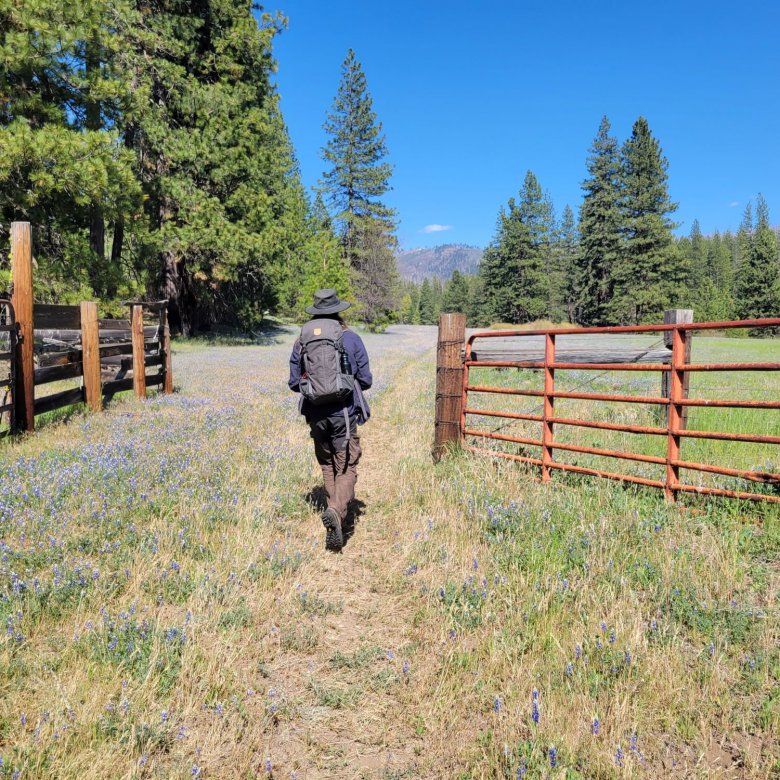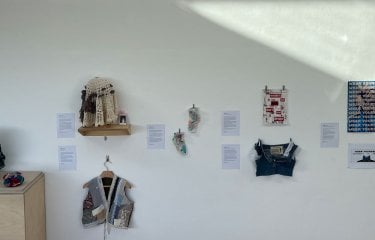Wild Voices: The "sound of extinction" by Tom Hull
12 August 2022

This piece was written by Tom Hull, a researcher at Falmouth University. He is a specialist in wild soundscapes working on an interdisciplinary level as a composer, sound designer, and field recordist within the creative industries, and as a soundscape ecologist in the ecological sciences. Since 2012 he has developed work independently under the pen name Missing Wolf, and in 2017 became an associate of Wild Sanctuary Inc, the world's leading organisation in soundscape study and art. Tom is a Fellow of the Winston Churchill Memorial trust in Science and Innovation and has lead soundscape research surveys in a number of the worlds remote and wild places. Professionally he has toured as a musician and created soundscape installations and compositions.
Recording the "sound of extinction"
As I write this, I’m sitting in a dorm at Sequoia and Kings canyon national park that currently serves as our base of operations for the wild soundscape project that is at the centre of new field research I’m conducting in the USA.
I’m a researcher at Falmouth University, working with the Bernie Krause Natural Sound Archive. Over the coming months, my team and I will be recording and analysing wild soundscapes from protected regions in the USA.
Throughout this trip, I’ll be following in the footsteps of Dr Bernie Krause, a soundscape ecologist and former musician, who worked with the likes of George Harrison, Bob Dylan and the Kinks in the sixties, before dedicating his life to capturing the sounds of wild.
Dr Krause has one of the world’s largest archives of soundscape recordings, dating from 1968 to the present, each sharing the wonders of the natural world. Through his time spent studying soundscapes, Dr Krause noted, that every living organism creates an acoustic signature that culminates in the “biophony”, the sum of biological sound in the soundscape.
Like the images of fascinating beasts featured on our television screens, it too is at risk; threatened by climate change, urban development, deforestation and declining biodiversity. From the rainforests of South America to the suburbia of middle England.
Silence is then the very sound of extinction. In place of the wonderous soundscape of the world’s jungles, oceans, forests, savannahs, deserts, meadows, and even our gardens and local parks, what we are left with is nothing but silence.
Wild soundscapes are the name for all the sounds that emanate from habitats around the world. Each wild soundscape is unique to the habitat from which it is produced, it’s also known as ‘the voice of the wild’. This voice is extremely expressive and what is communicated through the soundscape is relevant to our understanding of the wild world that surrounds us.
Wild soundscapes have been influential in the development of human cultures and continue to be integral to our wellbeing. More than we realise, the soundscape is key in shaping our sense of the world. As recent developments in the study of soundscape ecology have revealed, the soundscape as the ‘voice of a habitat’ is a meaningful expression that tells us about the health of the environment and the life that lives there.
The ‘biophony’ is the living component of the soundscape of a habitat formed of the interwoven and interrelating acoustic signatures of species. These soundscapes are the voice of the wild - a voice that tells us how the ‘other’ life around us is doing, and how we as humans are doing in relation to it. In this way, sound completes the ecological ‘picture’ and can even supplant what we see entirely.
By listening to the biophony, it’s possible to observe a temporal shift by comparing soundscape recordings that depict the same location at different points in time. This technique allows us to expose changes over time, helping us to better comprehend the life around us and threats posed to animal populations and habitats.
There is still a wonderous wildness in the world and much we can still protect and work harder to better comprehend. The study of wild soundscapes gives us valuable tools, helping us connect with the wild to better detect the rapidly changing world in which we live.
So, careful listening to the soundscape is an incredibly important practice, which restores a previously ‘overlooked’ dimension to ecological investigation. However, the wild habitats from which biophonies are produced, are being degraded and eroded.
The consequence of which is a loss that resonates in Dr Krause’s archive with 50% of the wild soundscapes recorded, being from habitats now so radically altered that they're either altogether silent or can no longer be heard in their original form.
As Dr Krause states, ‘the message is unassailable’ and one we must give our attention, as the biophony, the acoustic expression of life is falling silent. Silence is then the very sound of extinction. In place of the wonderous soundscape of the world’s jungles, oceans, forests, savannahs, deserts, meadows, and even our gardens and local parks, what we are left with is nothing but silence. The silencing of the biophony is an acoustic expression of the systemic degradation of the natural world.
But there is still a wonderous wildness in the world and much we can still protect and work harder to better comprehend. The study of wild soundscapes gives us valuable tools, helping us connect with the wild to better detect the rapidly changing world in which we live - even exposing changes that are invisible to the naked eye.
As soundscape ecologists, we’re documenting soundscapes that may soon be extinct, never to be heard again outside of the historic records of a sound archive. But, to hear and share these recordings with others is to evoke a deeply emotional sense we all have towards the world around us.
I’d like to invite the political leaders of the world to viscerally experience the loss of these wild kingdoms by listening to these soundscapes for themselves. The voice of the wild is greater than mine and if left to speak for itself is powerfully evocative.
Wild soundscapes allow us to recognise the other life that surrounds us and to ask questions about how in synch we humans are with the wild world. So, if we can better understand the conditions required for the biophony to thrive we may better perceive the human impact on the natural world and understand how to take better care of it.
With this in mind, I’d like to invite the political leaders of the world to viscerally experience the loss of these wild kingdoms by listening to these soundscapes for themselves. The voice of the wild is greater than mine and if left to speak for itself is powerfully evocative.
It is my hope that a deeper comprehension of the biophony may offer us a way to reconnect with the magic of the wild, and to recognise the evolutionary link that binds all life. The interrelation between the life present in wild soundscapes, when reflected upon, provides an opportunity to move towards notions of kinship, rather than of division. A notion that seems as important now as it ever was.
If we can remember how to hear the voice of the wild once more and to listen to it on its own terms, to listen to the integrity present in wild soundscapes, to hear the knowledge they can give us, we may learn to better comprehend and so protect life, be it human or wild.







